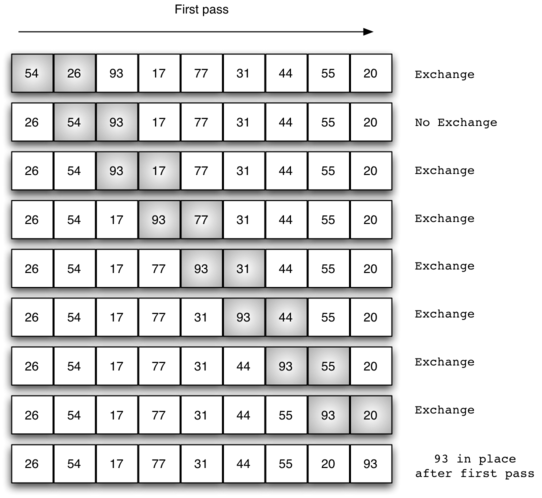✅ Bubble Sort Code O(n²)
def bubble_sort(arr):
for start in range(len(arr)):
for i in range(len(arr)-1, start, -1):
if arr[i - 1] > arr[i]:
(arr[i - 1], arr[i]) = (arr[i], arr[i - 1])
📝 Quick Review for Fast Recall
- ✅ Compare adjacent elements → Swap if out of order → Repeat until sorted
- ✅ O(n²) complexity → Inefficient for large datasets
- ✅ O(1) space → In-place sorting
- ✅ Stable → Preserves relative order of equal elements
- ✅ Use Case? Simple implementation, useful for small datasets or teaching purposes.
- ✅ Better alternatives? QuickSort (O(n log n)), MergeSort (O(n log n))
⏳ Time Complexity & Number of Operations (Bubble Sort)
- ✅ Best Case (Already Sorted): O(n) → Single pass without swaps
- ✅ Worst Case (Reverse Sorted): O(n²) → Maximum swaps and comparisons
- ✅ Average Case (Random Order): O(n²) → Performance remains poor
- ✅ Space: O(1) → In-place sorting
- ✅ Total comparisons: (n² - n) / 2
- ✅ Total swaps: O(n²) in worst case
⚠️ Traps & Things to Watch Out For
- Unnecessary comparisons: Optimized versions stop early if no swaps occur.
- Inefficiency: Not practical for large inputs—consider QuickSort or MergeSort.
- Confusion with other sorts: Bubble Sort is stable, while Selection Sort is not.
Bubble Sort (bubble up from L → R version)
